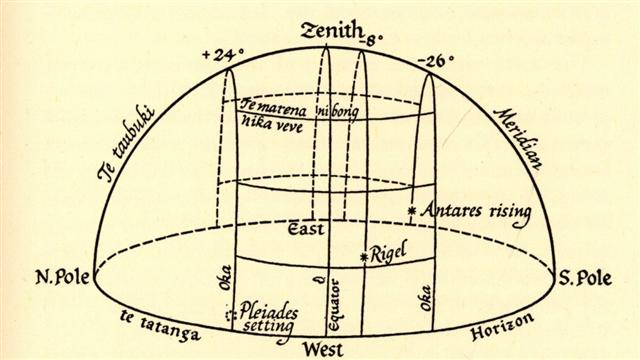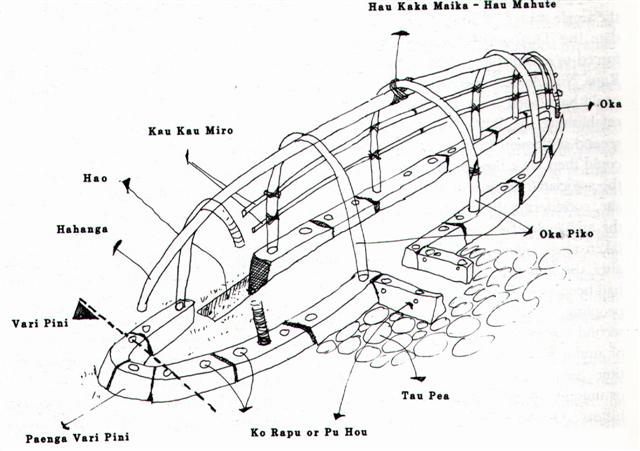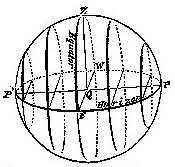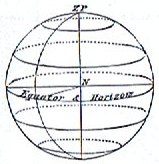2. Thanks to the Gilbertese Polynesians (and Makemson) it is possible to put together a half-globe sky with its fundamental coordinates:
The rising Antares defines the southern beginning of a central band covering 24 + 26 = 50 degrees of declination. The 4th oka in this timespace 'house' is defined by the setting Pleiades. The oka of Rigel lies 26 - 8 = 14 degrees away from the oka of rising Antares and 8 + 24 = 32 degrees ahead of the oka defined by the setting Pleiades.
The connection between a 'digging stick' and its reverse, a hole, is illustrated in a hare paega (picture from Van Tilburg):
Stones with holes in them were used to keep the framework in place. The house serves as a concrete image of the night sky. A wooden 'stick' is rising from one hole and descending into another. The entrance to this hare paega has 11 holes on one side and 19 on the other. 4 additional holes are used for fixing the entrance roof. The picture is another timespace diagram, but from Easter Island (26° S) instead of from the chain of Gilbert Islands which are straddling the equator. The stones with their holes were fixed like the stars on the sky dome above. The dome moved as a whole, and in Peter Jensen's Die Kosmologie der Babylonier does he point out how different the view is when the observations are done close to the equator compared to when someone is looking at the sky from a higher latitude (in the example at right from the north pole):
This type of fundamental difference in world view will program minds, and I remember reading that the Chinese kept constructing their mills with a horizontal axle instead of with a vertical axle as the Europeans they were in contact with tried to pursuade them to do. |



